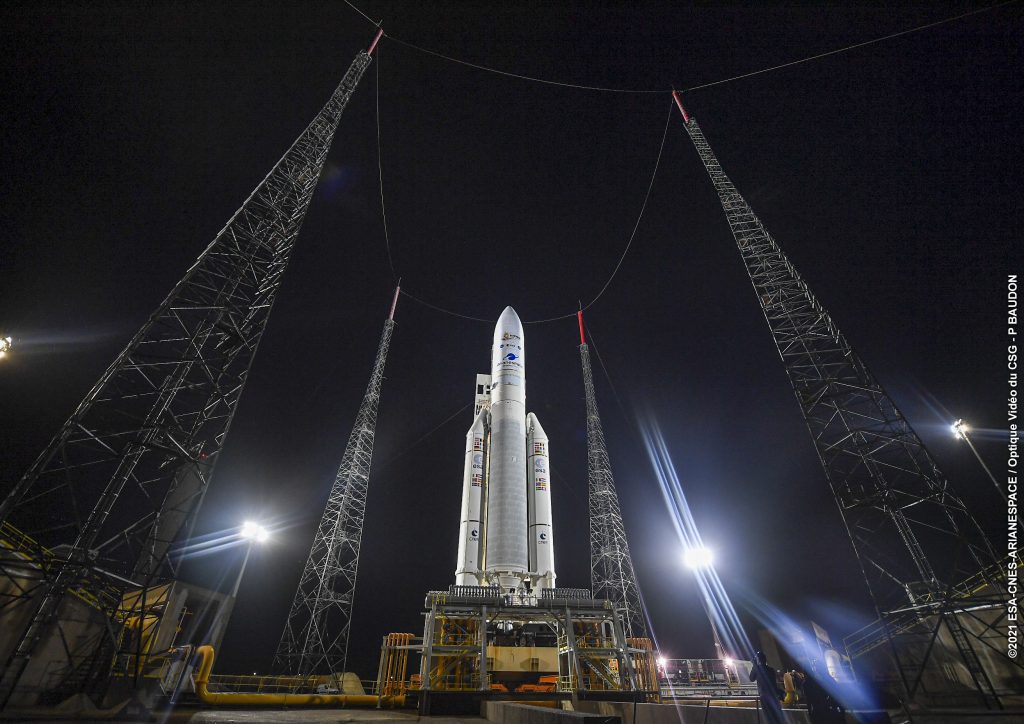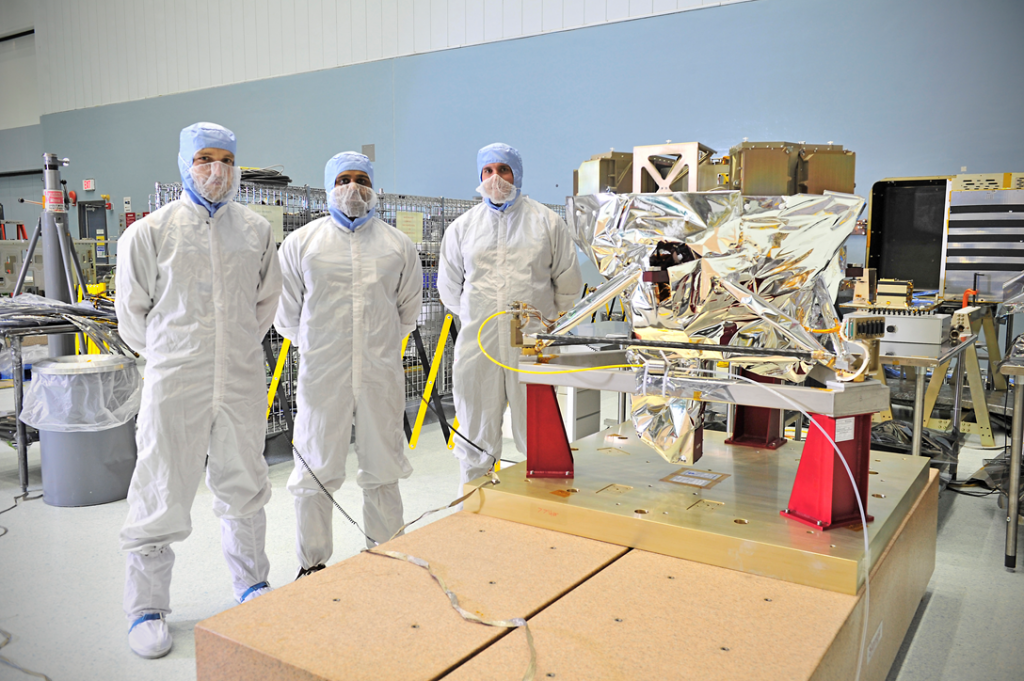Leicester Space scientists celebrate the launch of the James Webb Space Telescope

Space scientists at the University of Leicester are celebrating the launch of the most advanced space observatory ever built.
After 25 years and a $10bn (£7.6 million) NASA investment, University of Leicester astronomers, space scientists and engineers who have played a key role in the planning and construction of the James Webb Space Telescope (JWST), finally saw their hard work come to fruition following a tense but successful launch on Friday, December 24, 2021 – predicted to become known as ‘the day our understanding of the universe changed.’
The product of intensive research and design, JWST is 100 times more powerful than the 31-year-old Hubble Telescope. Webb can focus on some of the Universe’s most distant objects, effectively looking back in time all the way to the “let there be light” moment—the instant when matter in a cold, dark universe coalesced and ignited to become the first stars.
Leicester engineers provided the mechanical engineering lead for the Mid-Infrared Instrument (MIRI) to be carried on board the joint NASA, European Space Agency and Canadian Space Agency mission, which launched from Kourou in French Guiana aboard an Ariane 5 rocket.
Piyal Samara-Ratna is part of the Leicester team which made major contributions to the design, build and test of MIRI, and played a leading role in integrating the instrument into the observatory at NASA’s Goddard Space Flight Center.
He said: “The launch of the James Webb Space Telescope is a truly momentous occasion and marks the successful completion of the collaborative design, planning and execution of thousands of experts across the world.
“We designed and manufactured many of the components used in the flight instrument and led the tests to confirm the instrument’s ability to survive launch. We also ensured MIRI was delivered safely to NASA and played a leading role in the integration of MIRI onto the observatory. All of this has required incredible feats of engineering and teamwork, which can be truly celebrated today.”
MIRI offers a sensitivity and resolution many times greater than any other mid-infrared instrument in existence today or for the foreseeable future. It will have a key role in the study of light that has travelled from the early moments of the universe by JWST.

Amongst other things, it will be able to see the first galaxies that formed after the Big Bang, along with studying planet formation around distant stars. Due to its sensitivity, MIRI will be able to penetrate the dust obscuring distant objects, allowing for smaller and fainter objects than have never been detected to be mapped in unprecedented detail.
MIRI, like much of JWST’s instrumentation, will be protected from the intense radiation of the Sun by a huge five-layer sunshade which will unfold remotely as the telescope journeys to its final destination, around Lagrange point 2 (L2), where the gravitational pull of the Earth and Sun is in balance.
Martin Barstow, Professor of Astrophysics and Space Science at the University of Leicester and Chair of the Space Telescope Institute Council, said: “I have been closely involved with preparations for launch and operations for the past seven years and witnessing the launch was both a tremendously exciting and nail-biting event after more than 20 years of planning, development and testing, with many challenges overcome on the way. But the tension does not stop here.
“The journey to the L2 orbit takes around one month and several critical events will happen on the way. The sunshield will be unfurled about a week after launch and that will be followed by deployment of the tower supporting the telescope, opening of the folded telescope and positioning of the secondary mirror. All these operations have to work perfectly for the telescope to function.
“All the instruments will be switched on during the cruise to L2. Shortly after arrival the telescope will be focused and aligned, a process lasting around three months. The science instrument will then be commissioned. If all goes to plan, JWST will be ready for science observations 180 days from now.”
JWST operations will be run from the Space Telescope Science Institute (STScI). Professor Barstow chairs the Space Telescope Institute Council, with responsibility for overseeing the Institute and the facilities it operates, including Hubble and JWST plus other telescopes based on Earth.
Once operational, scientists are eagerly awaiting a flood of new scientific data as they look to answer some of the fundamental questions about our Universe.
Scientific targets identified by Leicester astronomers and planetary scientists have been selected from more than 1,000 submitted by researchers from 44 countries, for a portion of the 6,000 observing hours available in JWST’s first year of operation, known as Cycle 1.
Dr Leigh Fletcher is an Associate Professor in Planetary Science at the University of Leicester and is Principal Investigator (PI) and co-investigator (co-I) on a number of programmes, including the study of Jupiter’s famous Great Red Spot, Saturn’s summer pole and rings, and to acquire global infrared maps of Uranus and Neptune to reveal the properties of their stratospheres for the first time. The unprecedented sensitivity of JWST makes it the ideal observatory for studying the frigid and frozen worlds of the outer solar system.
He added: “Here in Leicester, we’re leading a raft of observations that are ready to be executed on the new telescope, from peering at distant galaxies to understand their evolution, to observing the aftermath of the deaths of stars, to revealing the climate and meteorology of the giant planets in our own solar system.
“We’re hoping to see results from these long-awaited observations sometime during Cycle 1, between mid-2022 and mid-2023, and we’re certain that scientists will be making spectacular new discoveries with these data for many years to come.”
Find out more about Leicester’s role in developing the most ambitious space telescope ever created at le.ac.uk/physics/research/projects/james-webb-space-telescope.


